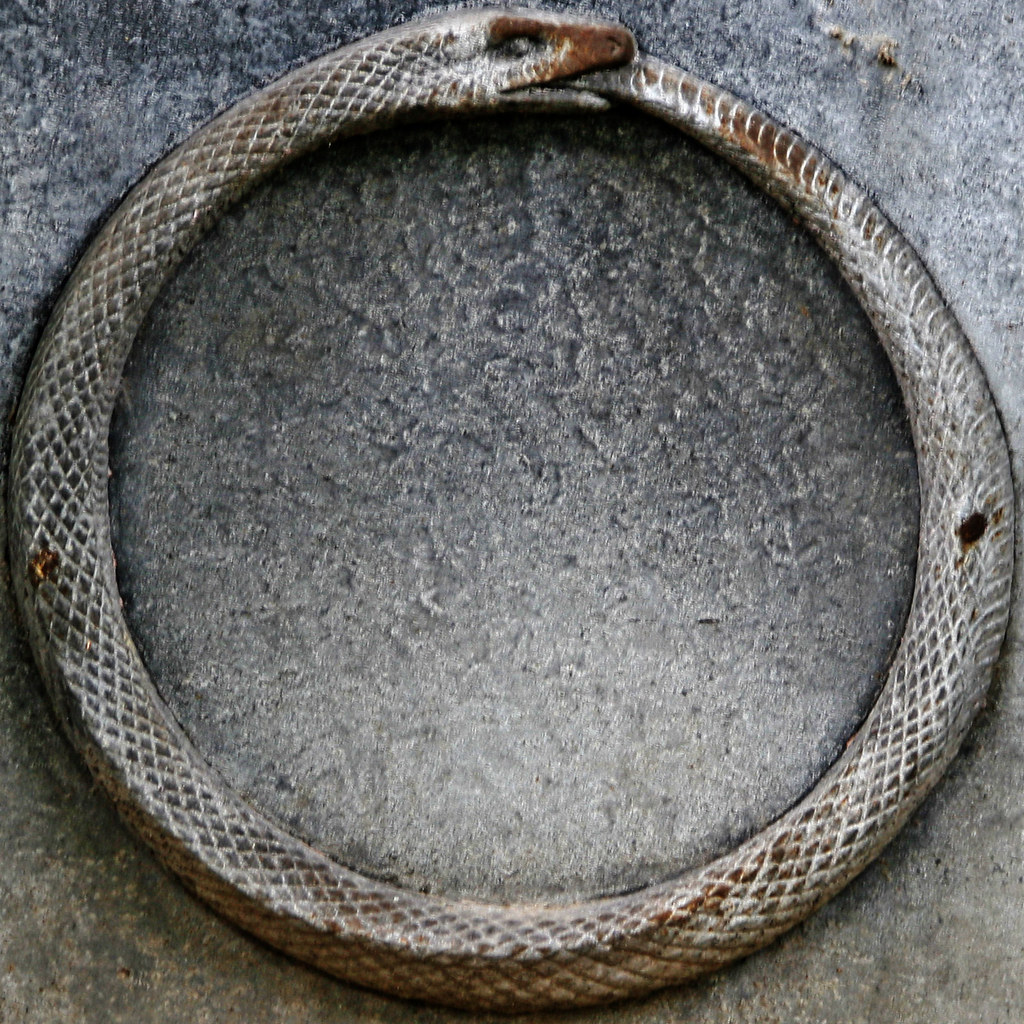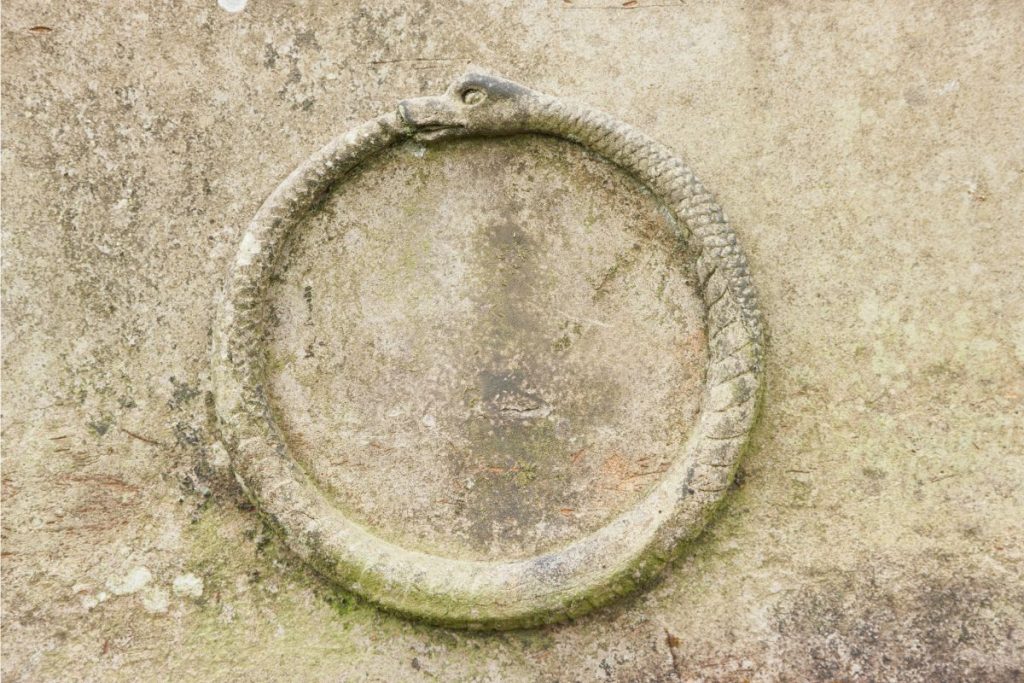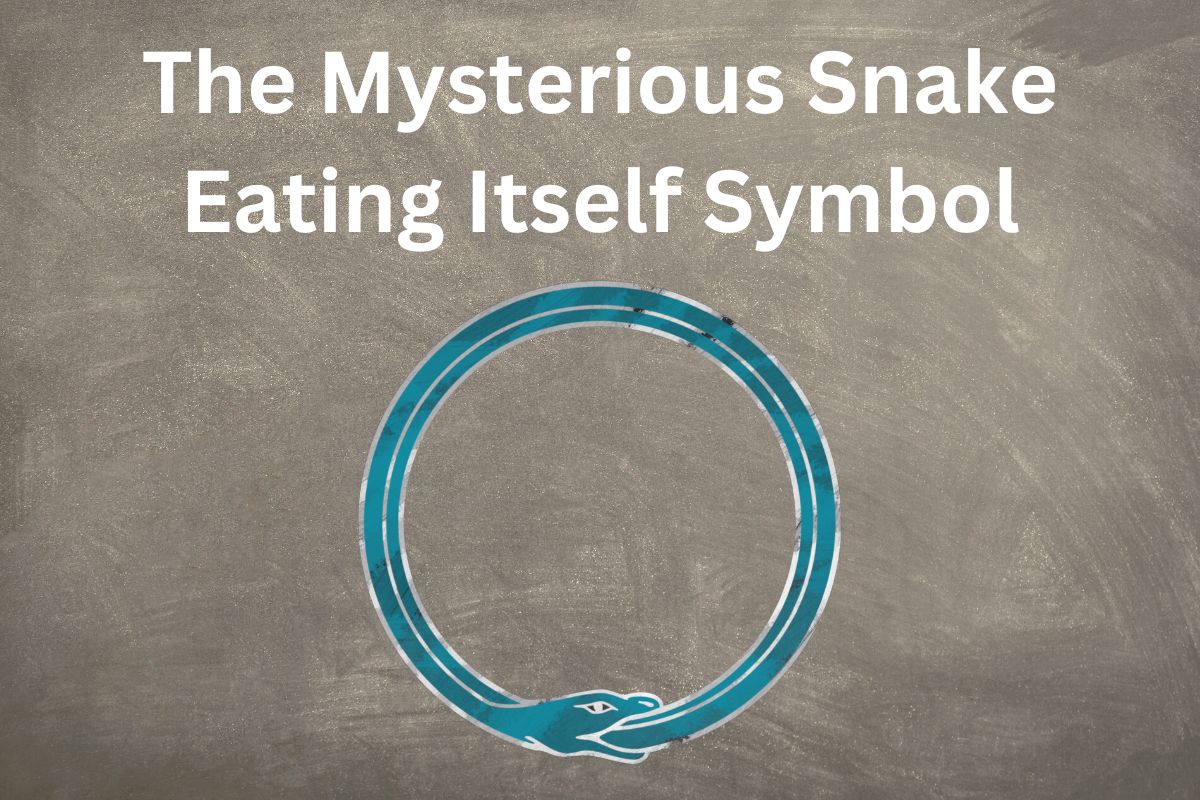The snake eating itself symbol, also known as the ouroboros, is an ancient symbol from Egypt that represents eternity and infinity, as well as self-destruction.
The Ouroboros (Uroboros) is an ancient symbol of a serpent or a snake eating itself. The primary meanings associated with the Ouroboros symbol are- rebirth, self-reliance, eternity, the circular nature of the world, etc.
The snake eating its tail has been a popular symbol in many cultures since ancient times. But how did this symbol come into being, and why have people started using it?
What Is The Ouroboros?
Ouroboros is an ancient Greek word where Ouro means tail and Boros means eating. The Ouroboros was first used in King Tut’s tomb in Egypt in the 13th century.
The sign in the golden shrine of King Tut’s tomb appeared along with a couple of ancient texts. The tail-biting sea serpent was wrapped around a mummified figure. People believed that the mummified figure was Sun God Ra, King Tut, or both.
The symbol appeared twice in the text with the figure of King Tut or Ra-Osiris. One image appeared at the head and the feet of the figure.
Ancient Egyptians believed that the symbol signified the cycle of life or the nature of life. Egyptians believed in the repetitive nature of life. They thought life was constantly evolving and it was a sign of immortality. But in contrast, the symbol also meant the end of life.
The symbol of the snake biting its tail is also in Egyptian Iconography. They considered it a holy symbol representing faith and belief in the world’s chaos.

What Does the Ouroboros Symbol Mean?
The Ouroboros symbol has a different meaning in different cultures.
Symbol In Chinese Mythologies
Ancient Chinese archeologists discovered the Ouroboros symbol and believed that the dragon inspired it. The dragon or the snake symbol represented power, strength, and good luck.
Chinese mythologies and cultures also connect with the Ouroboros symbol and the Yin Yang sign. The Yin Yang sign divided the universe into earth and heaven as well as male energy and female energy.
Additionally, it’s the symbol of unity, and by combining everything, the symbol represents the perfect whole.
The Ouroboros As The Symbol Of The Rising & The Setting Sun
The tail devourer or the snake eating itself is also a sign of the rising and the setting sun, according to Ancient Egypt beliefs.
They considered the sun as the center of everything. Lord Ra was the sun god, and they believed he was born every morning. Ra travels the world during the day and dies at sunset to join Osiris in the underworld.
Ra’s journey could have been more straightforward. Apep, the giant crocodile or serpent, created storms, lighting, and other havoc to interrupt his journey.
But Ra was accompanied by Mehen, the snake God, and protected him during his journey. Based on this belief, archeologists believed that Ouroboros’ images on King Tut’s shrine represented Mehen protecting Ra.

Symbol Of Ouroborus In African Culture
The Fon people in Africa also believed in the tale of the giant serpent wrapping itself around the earth by holding its tail with its mouth. According to the Fon myth, the creator of the earth believed that the world is too heavy for nature’s elements like trees, animals, mountains, etc.
Hence, to prevent the earth from falling, he created a giant serpent to wrap itself around the globe and protect itself from falling apart.
Ouroboros Sign In Greek Culture
Ouroboros is a Greek word, and it means tail-eating. People in Greece considered the Ouroboros a symbol of self-reliance, and it can also symbolizes self-destruction.
People associated the symbol of Ouroboros with the myth of Sisyphus as well. The tail-biting snake symbolizes the repetitive nature of the full circle of life, similar to Sisyphus’s punishment.
Zeus, the Greek God, punished Sisyphus and asked him to roll a massive stone up the hill, let it fall back again, and repeat the process for eternity.
Significance Of The Ouroboros In Alchemy
Alchemy was the study of the transmutation of ordinary metal into gold. Alchemists used the Ouroboros symbol in numerous alchemical manuscripts and artifacts.
Ancient alchemical manuscripts titled Chrysopoeia Of Cleopatra, Aurora Consurgens, etc., feature Ouroboros’s symbol.
Ouroboros Symbol In Ancient Rome
In Roman mythology, the snake eating its body represented eternity. Romans also associated the self-eating snake sign with Saturn, who controlled the year’s cycles.
Ouroboros Symbolism In Norse Mythology
For the Norse people, the Ouroboros represented Jormungandr, a giant serpent that protected Midgard (the earth).
The image of the Jormungandr was prevalent in their engravings, artifacts, and portraits. It was portrayed similarly with a giant serpent biting its tail encircling the earth.
Ouroboros’ Symbol In Christianity, Judaism, & Gnosticism
In the Hebrew Bible, there is a similar figure like the Ouroboros, called Leviathan. Some associated it with Apep, the snake God who protected Ra.
One of the primary pieces of Kabbalistic literature called Zohar mentioned Leviathan as Ouroboros.
According to Gnosticism, Ouroboros represented unity with God. Gnostics believed that the snake’s head represented God or supreme power and the tail represented the physical world. And both of these are interconnected.
Why Is Ouroboros Eating Itself?
Different cultures have different interpretations of the snake eating itself. The snake biting its tail generally symbolizes the infinite cycle of life and death.
Other cultures, especially some African cultures, believed that the giant serpent was biting itself to save the world from sinking.
While other ancient mythologies believed that the symbol represented the repetitive nature of life.
Is The Ouroboros Symbol Of Good or Evil?
The Ouroboros is mainly recognized as a symbol of good. As said, it symbolized the cycle of life, rebirth, and strength. It also meant unity and recreation of material and spiritual objects.
But some cultures also believe that it’s a bad sign, symbolizing self-destruction.
If you found this article interesting, check out this article on cult symbols and their significance.

